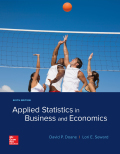
Instructions: In all exercises, include software results (e.g., from Excel, MegaStat, or Minitab) to support your calculations. State the hypotheses, show how the degrees of freedom are calculated, find the critical value of chi-square from Appendix E or from Excel’s
Pick one Excel data set (A through F) and investigate whether the data could have come from a normal population using α = .01. Use any test you wish, including a histogram, or MegaStat’s
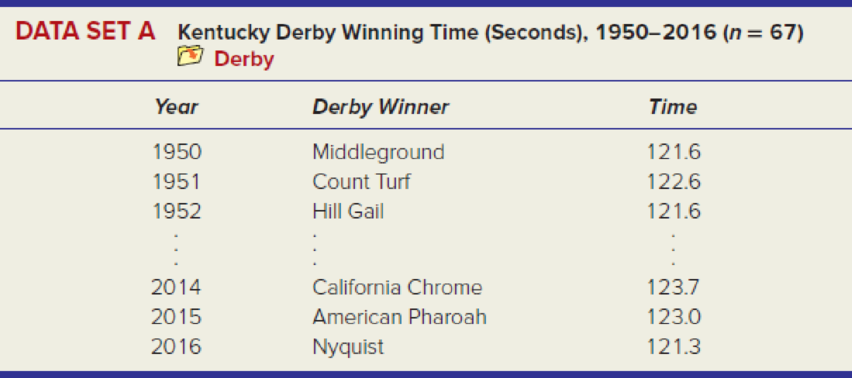
Source: www.wikipedia.org.


Source: Independent project by statistics student Frances Williams. Weighed on an American Scientific Model S/P 120 analytical balance, accurate to 0.0001 gram.
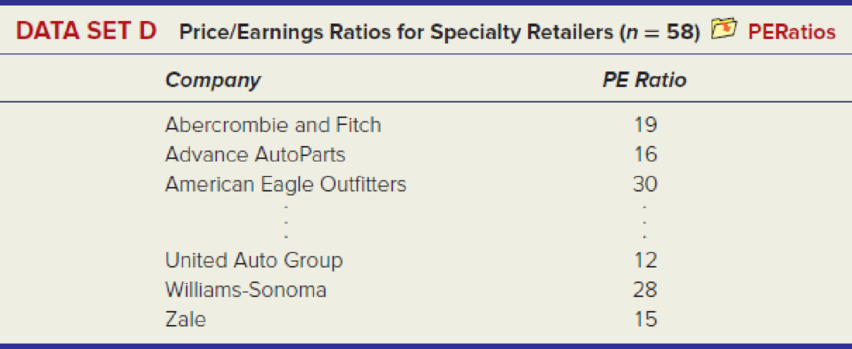
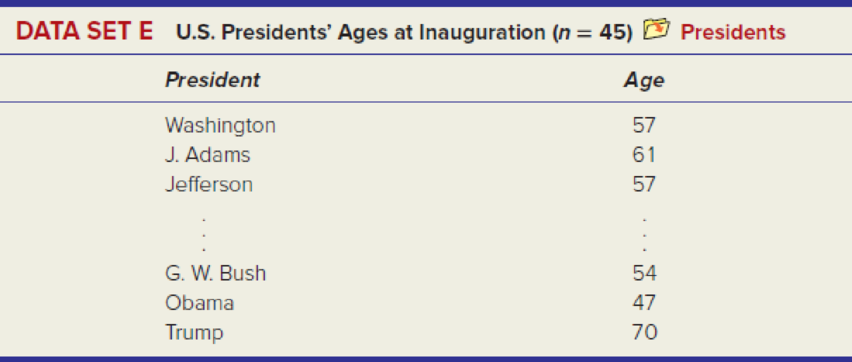
Source: www.wikipedia.org

State the null and alternative hypothesis.
Find the degrees of freedom.
Find the critical value of chi-square from Appendix E or from Excel’s function.
Calculate the chi-square test statistics at 0.01 level of significance.
Interpret the p-value.
Check whether the conclusion is sensitive to the level of significance chosen, identify the cells that contribute to the chi-square test statistic and check for the small expected frequencies.
Draw histogram.
Test to obtain a probability plot with the Anderson-Darling statistic.
Interpret p-values.
Answer to Problem 40CE
The null hypothesis is:
And the alternative hypothesis is:
The degrees of freedom is 1.
The critical-value using EXCEL is 2.705543.
The chi-square test statistics at 0.1 level of significance is 0.0486.
The p-value for the hypothesis test is 0.825518.
There is enough evidence to conclude that the Circulated nickels come from a Normal population.
The conclusion is not sensitive to the level of significance chosen.
The chi-square test statistic has highest chi-square value for zero appointments.
There is no expected frequencies that are too small.
The histogram is:
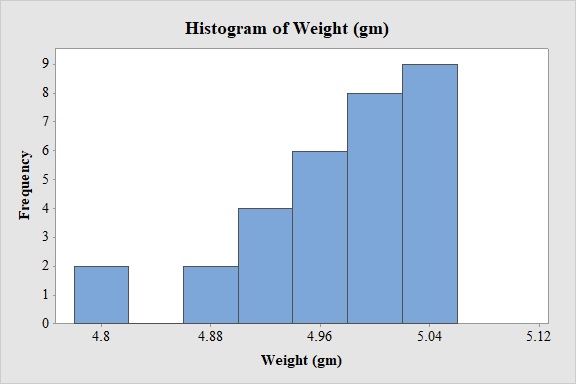
The probability plot is:
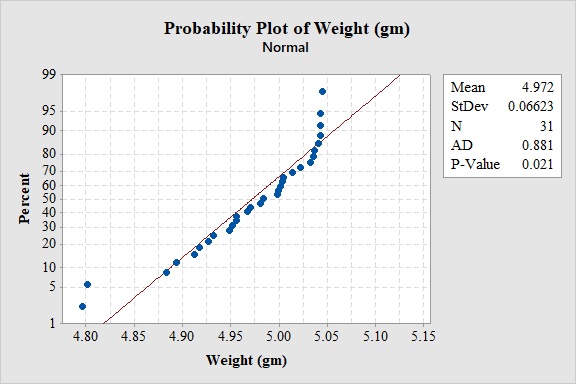
The Anderson-Darling statistics is 0.881.
The p-value is 0.021.
There is enough evidence to conclude that the Circulated nickels come from a Normal population.
Explanation of Solution
Calculation:
Results will vary.
There are 6 data set and pick any of them. The given information is the 31 randomly chosen circulated nickels.
The claim is to test whether the data provide sufficient evidence to conclude that the Circulated nickels come from a Normal population. If the claim is rejected, then the Circulated nickels do not come from a Normal population.
The test hypotheses are given below:
Null hypothesis:
Alternative hypothesis:
Software procedure:
- Step by step procedure to obtain the mean and standard deviations using the MINITAB software.
- Choose Stat > Basic Statistics>Display Descriptive Statistics.
- Under Variables, choose 'Weight'
- Choose Statistics, Select mean and Standard deviation.
- Click OK.
Output obtained from MINITAB software for the data is:

Thus, the mean and the standard deviation of the data is 4.9719 and 0.0662 respectively.
For a normal distribution the first and last class must be open-ended. The upper limit of bin j can be is obtained by the Excel’s function.
Procedure for upper limit using EXCEL:
Step-by-step software procedure to obtain upper limit for first class using EXCEL software is as follows:
- Open an EXCEL file.
- In cell A1, enter the formula “=NORM.INV(1/6,75.38,8.94)”
- Output using EXCEL software is given below:

Thus, the upper limit for first class using EXCEL is 4.908.
Similarly the remaining limits can be obtained as shown below:
| Weights |
| Under 4.908 |
| 4.908–4.943 |
| 4.943–4.972 |
| 4.972–5.000 |
| 5.000–5.036 |
| 5.036 or more |
The expected frequency can be obtained by the following formula:
Where c is the number of bins and n is the sample size.
Substitute
Then the expected frequency for each bin can be obtained as shown in the table:
| Weights | Expected Frequency |
| Under 4.908 | 5.17 |
| 4.908–4.943 | 5.17 |
| 4.943–4.972 | 5.17 |
| 4.972–5.000 | 5.17 |
| 5.000–5.036 | 5.17 |
| 5.036 or more | 5.17 |
| Total | 31 |
Frequency:
The frequencies are calculated by using the tally mark and the range of the data is from 4.796 to 5.045.
- Based on the given information, the class intervals are under 4.908, 4.908–4.943, and so on, 5.036 or more.
- Make a tally mark for each value in the corresponding class and continue for all values in the data.
- The number of tally marks in each class represents the frequency, f of that class.
Similarly, the frequency of remaining classes for the emission is given below:
| Weights | Tally | Observed Frequency |
| Under 4.908 | 4 | |
| 4.908–4.943 | 4 | |
| 4.943–4.972 | 6 | |
| 4.972–5.000 | 4 | |
| 5.000–5.036 | 8 | |
| 5.036 or more | 5 |
Let
The chi-square test statistics can be obtained by the formula:
Then the chi-square test statistics can be obtained as shown in the table:
| Weights | Frequency | Expected Frequency | ||
| Under 4.908 | 4 | 5.17 | –1.17 | 0.265 |
| 4.908–4.943 | 4 | 5.17 | –1.17 | 0.265 |
| 4.943–4.972 | 6 | 5.17 | 0.83 | 0.133 |
| 4.972–5.000 | 4 | 5.17 | –1.17 | 0.265 |
| 5.000–5.036 | 8 | 5.17 | 2.83 | 1.55 |
| 5.036 or more | 5 | 5.17 | –0.17 | 0.005 |
| Total | 31 | 31 | 0 | 2.483 |
Therefore, the chi-square test statistic is 2.483.
Degrees of freedom:
The degrees of freedom can be obtained as follows:
Where c is the number of classes and m is the number of parameters estimated. Here only 2 parameters are estimated.
Substitute 6 for c and 2 for m.
Thus, the degrees of freedom for the test is 3.
Procedure for p-value using EXCEL:
Step-by-step software procedure to obtain p-value using EXCEL software is as follows:
- Open an EXCEL file.
- In cell A1, enter the formula “=CHISQ.DIST.RT(2.483,3)”
- Output using EXCEL software is given below:

Thus, the p-value using EXCEL is 0.478.
Rejection rule:
If the p-value is less than or equal to the significance level, then reject the null hypothesis
Conclusion:
Here, the p-value is greater than the 0.01 level of significance.
That is,
Therefore, the null hypothesis is not rejected.
Thus, the data provide sufficient evidence to conclude that the Circulated nickels come from a Normal population.
Take
Here, the p-value is less than the 0.05 level of significance.
That is,
Therefore, the null hypothesis is not rejected.
Thus, the data provide sufficient evidence to conclude that the Circulated nickels come from a Normal population.
Thus, the conclusion is same for both the significance levels.
Hence, the conclusion is not sensitive to the level of significance chosen.
The class 5.000-5.036 contribute most to the chi-square test statistic.
Since all
Frequency Histogram:
Software procedure:
- Step by step procedure to draw the relative frequency histogram for mileage for 2000 using MINITAB software.
- Choose Graph > Histogram.
- Choose Simple.
- Click OK.
- In Graph variables, enter the column of 'Weight'.
- In Scale, Choose Y-scale Type as Frequency.
- Click OK.
- Select Edit Scale, Enter 4.8, 4.88, 4.96, 5.04, 5.12 in Positions of ticks.
- In Labels, Enter 4.8, 4.88, 4.96, 5.04, 5.12 41 in Specified.
- Click OK.
Observation:
It is clear from the histogram that the histogram is not symmetric. The left hand tail is little larger than the right hand tail from the maximum frequency value. Thus, there is little negative skewness on the histogram.
Software procedure:
Step by step procedure to obtain the probability plot using the MINITAB software:
- Choose Stat > Basic Statistics > Normality Test.
- In Variable, enter the column of 'Weights'.
- Under Test for Normality, select the column of Anderson-Darling.
- Click OK.
From the probability plot, it can be observed that most of the observations lies near to the straight line. Therefore, the data is from a normal distribution.
From the MINITAB output the Anderson-Darling statistics is 0.881.
From the MINITAB output the p-value is 0.021.
Conclusion:
Here, the p-value is greater than the 0.01 level of significance.
That is,
Therefore, the null hypothesis is not rejected.
Thus, the data provide sufficient evidence to conclude that the Circulated nickels come from a Normal population.
Want to see more full solutions like this?
Chapter 15 Solutions
APPLIED STAT.IN BUS.+ECONOMICS
- Calculate the X² statistic then compare it with the critical value to determine if we will reject or fail to reject the null hypothesis that "There is no difference in the proportion of students that choose STEM, Social Sciences and Liberal Arts"arrow_forwardThe personality trait of "Conscientiousness" (someone who is organized, responsible, and can control their impulses) has μ = 120 and σ =9. Test whether ARC students (n = 9, M = 126) differ on Conscientiousness. α = .05. Does the z score for the sample mean lie in the critical region (beyond the critical boundary)?arrow_forwardThe critical value(s) is/are t0= ? Find the standardized test statistic ? Decide whether to reject or fail to reject the null hypothesis.? Interpret the decision in the context of the original claim. ?arrow_forward
- Refer to the data display from a sample of airport data speeds in Mbps. What is the number of degrees of freedom that should be used for finding the critical value ta/2 ?arrow_forwardA third study is run to estimate the effect of the low-carbohydrate diet on cholesterol levels. In the study, participants' cholesterol levels are measured before starting the program and then again after 6 months on the program. The datar are shown below. Is there a significant increase in cholesterol after 6 months on the low-carbohydrate diet? Run the appropriate test at a 5% level of significance.arrow_forwardAverage IQ scores for young school children are known to be 100 (SD = 15). However, the literature indicates that children’s intelligence may be decreased if their mothers have German measles during pregnancy. Using hospital records, a researcher obtained a sample of n = 25 school children whose mothers all had German measles during their pregnancies. Do the data indicate that children born to mothers who had German measles during the pregnancy have significantly lower IQ scores than typical young school children? child IQ scr 1 91 2 111 3 97 4 95 5 96 6 95 7 95 8 96 9 94 10 93 11 95 12 92 13 96 14 91 15 97 16 93 17 92 18 99 19 93 20 97 21 85 22 94 23 96 24 95 25 96 a. What is the independent variable in the research study? b. Is the independent variable categorical or quantitative? c. What is the dependent variable in…arrow_forward
- Average IQ scores for young school children are known to be 100 (SD = 15). However, the literature indicates that children’s intelligence may be decreased if their mothers have German measles during pregnancy. Using hospital records, a researcher obtained a sample of n = 25 school children whose mothers all had German measles during their pregnancies. Do the data indicate that children born to mothers who had German measles during the pregnancy have significantly lower IQ scores than typical young school children? child IQ scr 1 91 2 111 3 97 4 95 5 96 6 95 7 95 8 96 9 94 10 93 11 95 12 92 13 96 14 91 15 97 16 93 17 92 18 99 19 93 20 97 21 85 22 94 23 96 24 95 25 96 A. Is the dependent variable categorical or quantitative? A B. What is the mean IQ for the sample? B C. What is the sample standard deviation? C D. What…arrow_forwardDr. Castillejo feels that the maximum pulse rate during the run is a good predictor in explaining the oxygen consumption in the blood stream. He asserts that if the pulse rate at the end of the run increased, then the oxygen consumption will also increase, hence his/her heart is functioning well. Based on the R commanderoutput below, check if the data on oxygen consumption and maximum pulse rate (from 152 bpm to 196bpm) support Dr. Castillejo’s assertion.arrow_forwardUse SPSS to run the analysis described in Question 6. What is the obtained t-statistic? Enter the value with three decimal places. If it is negative, be sure to include the sign.arrow_forward
- Use Spearman rho to test the hypothesis at 5% level of significance in which there is no significant correlation between mental ability and English proficiency. What is the value of ΣD2? What is the absolute calculated ρ(rho) value? Using the tabulated value ρtab = 0.648, what is the decision? accept or reject Ho?arrow_forwardWhich two fields of the ANOVA summary table help us find the critical value? Select all that apply A.df between B.MS within C.df within D. MS betweenarrow_forwardThe lower quartile (Q1) height for JV players is the same as the ______ for Varsity players.arrow_forward
 Glencoe Algebra 1, Student Edition, 9780079039897...AlgebraISBN:9780079039897Author:CarterPublisher:McGraw Hill
Glencoe Algebra 1, Student Edition, 9780079039897...AlgebraISBN:9780079039897Author:CarterPublisher:McGraw Hill
